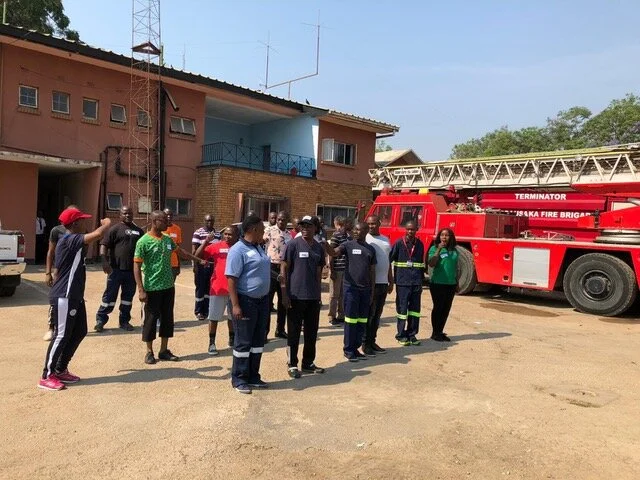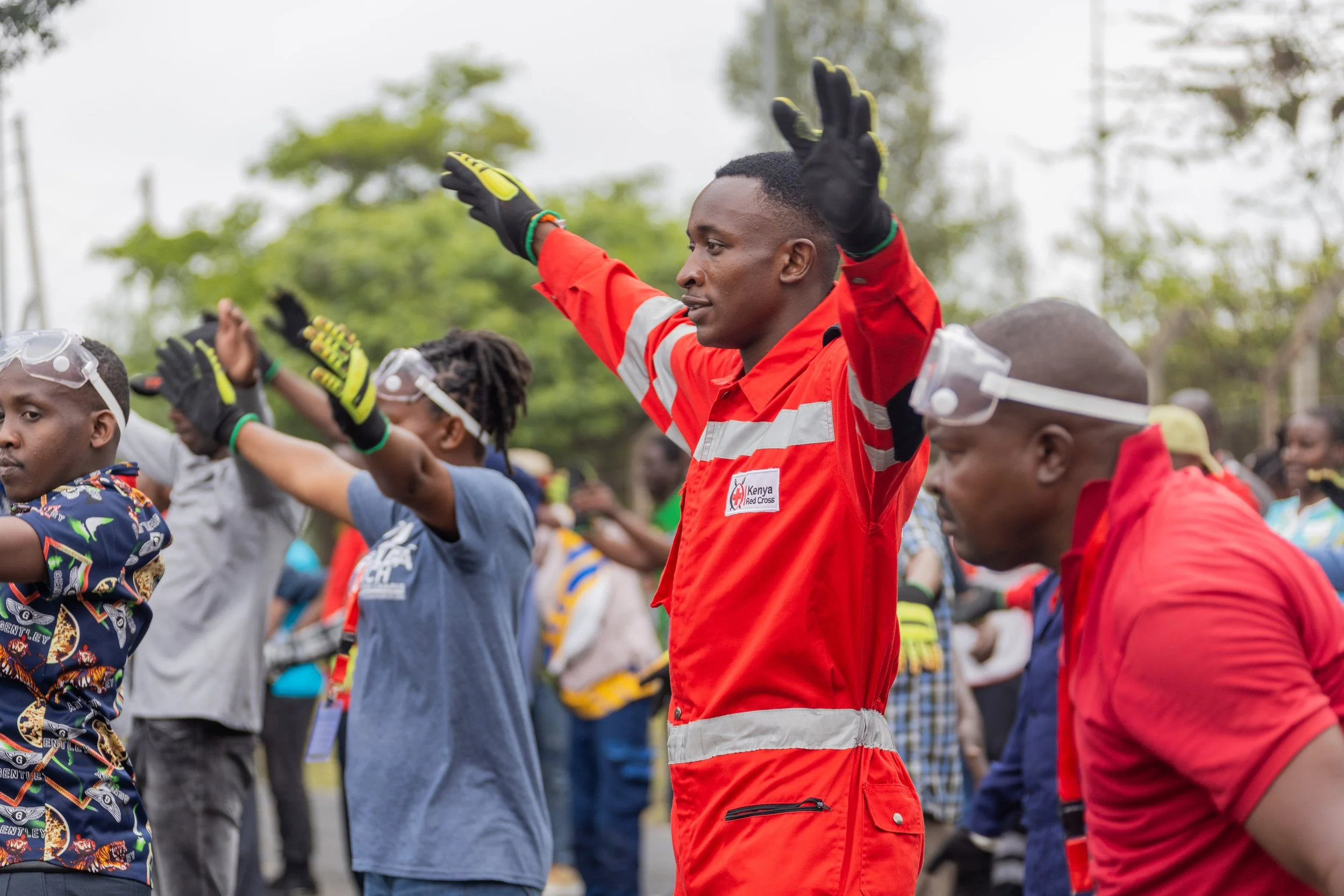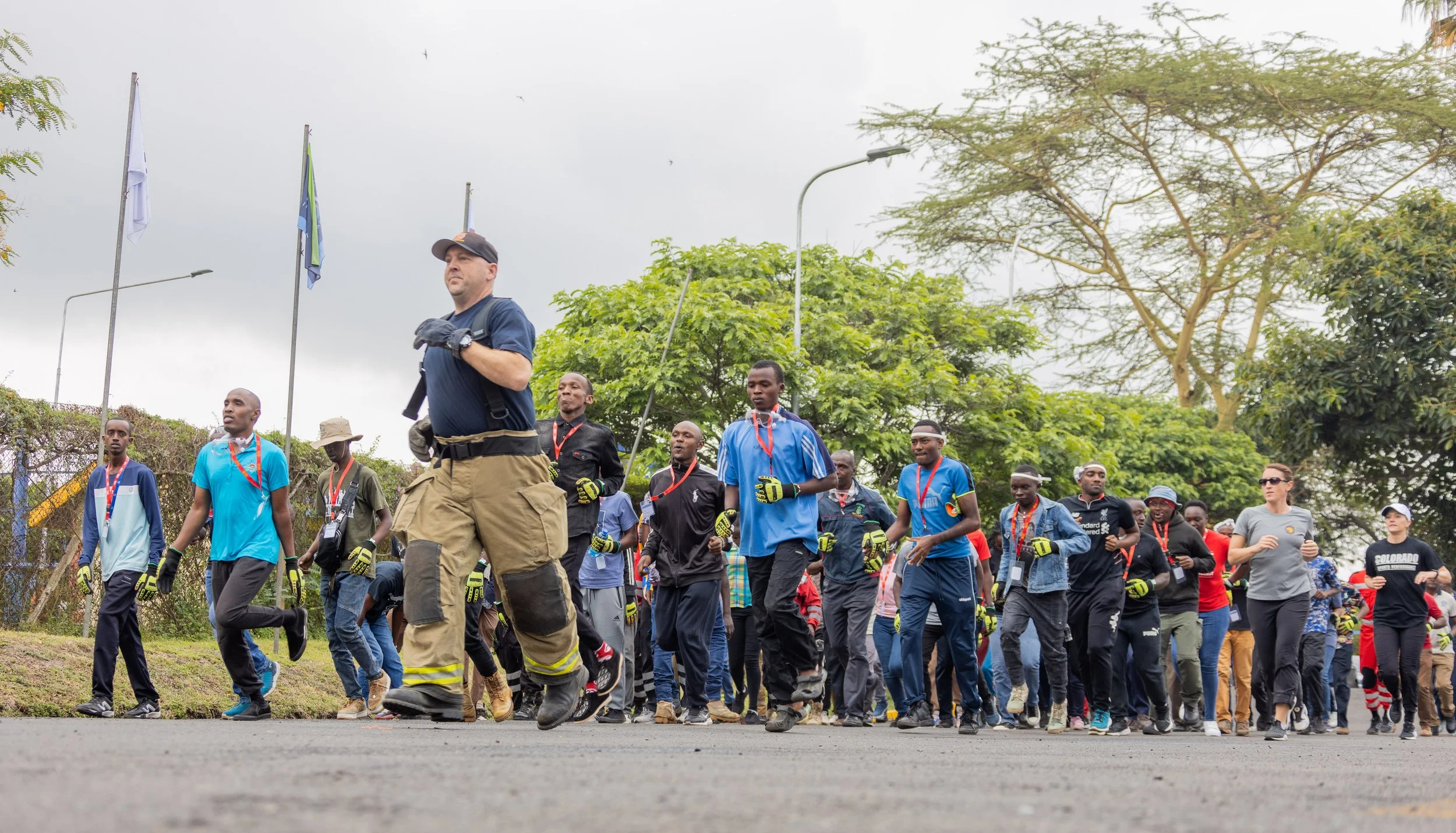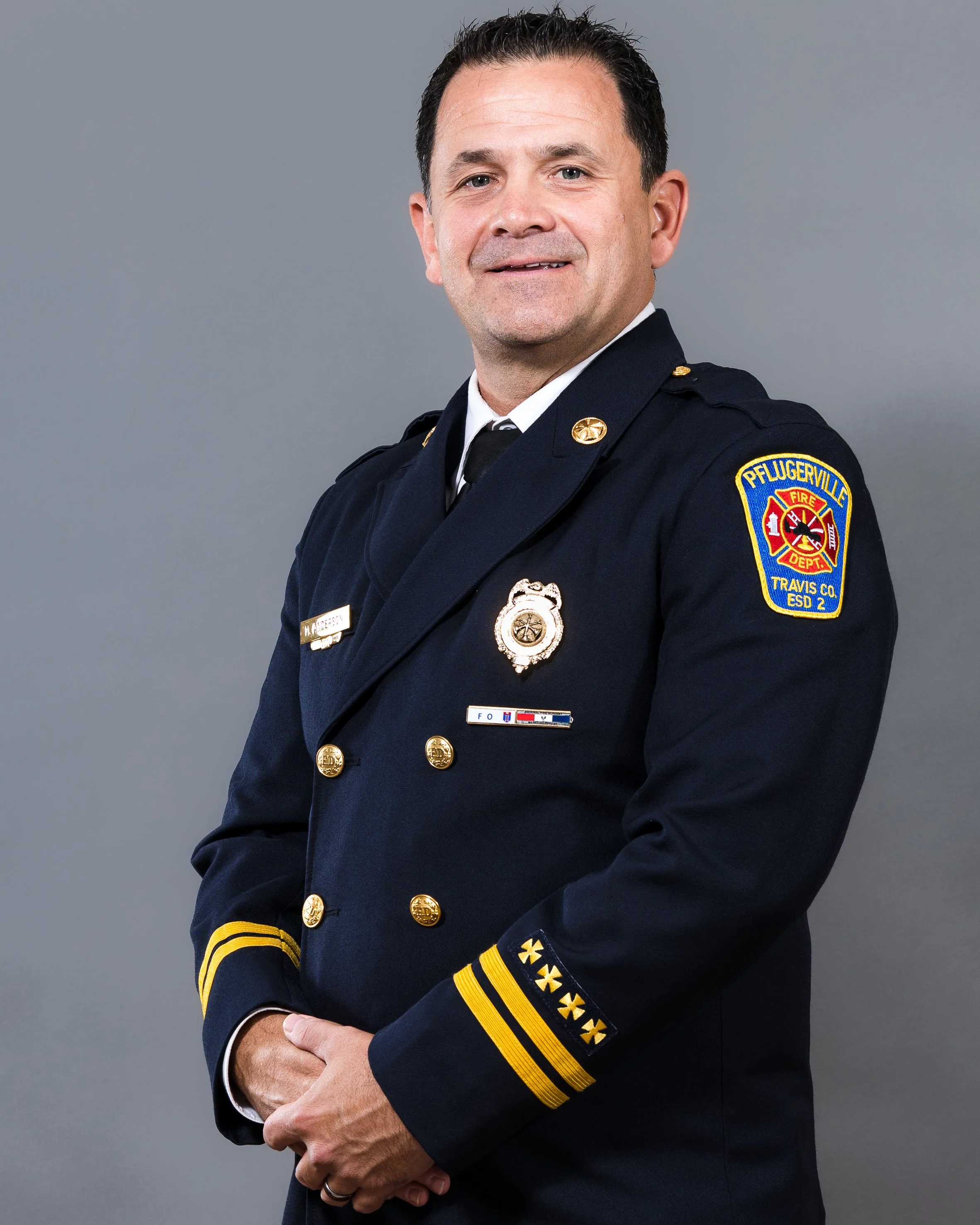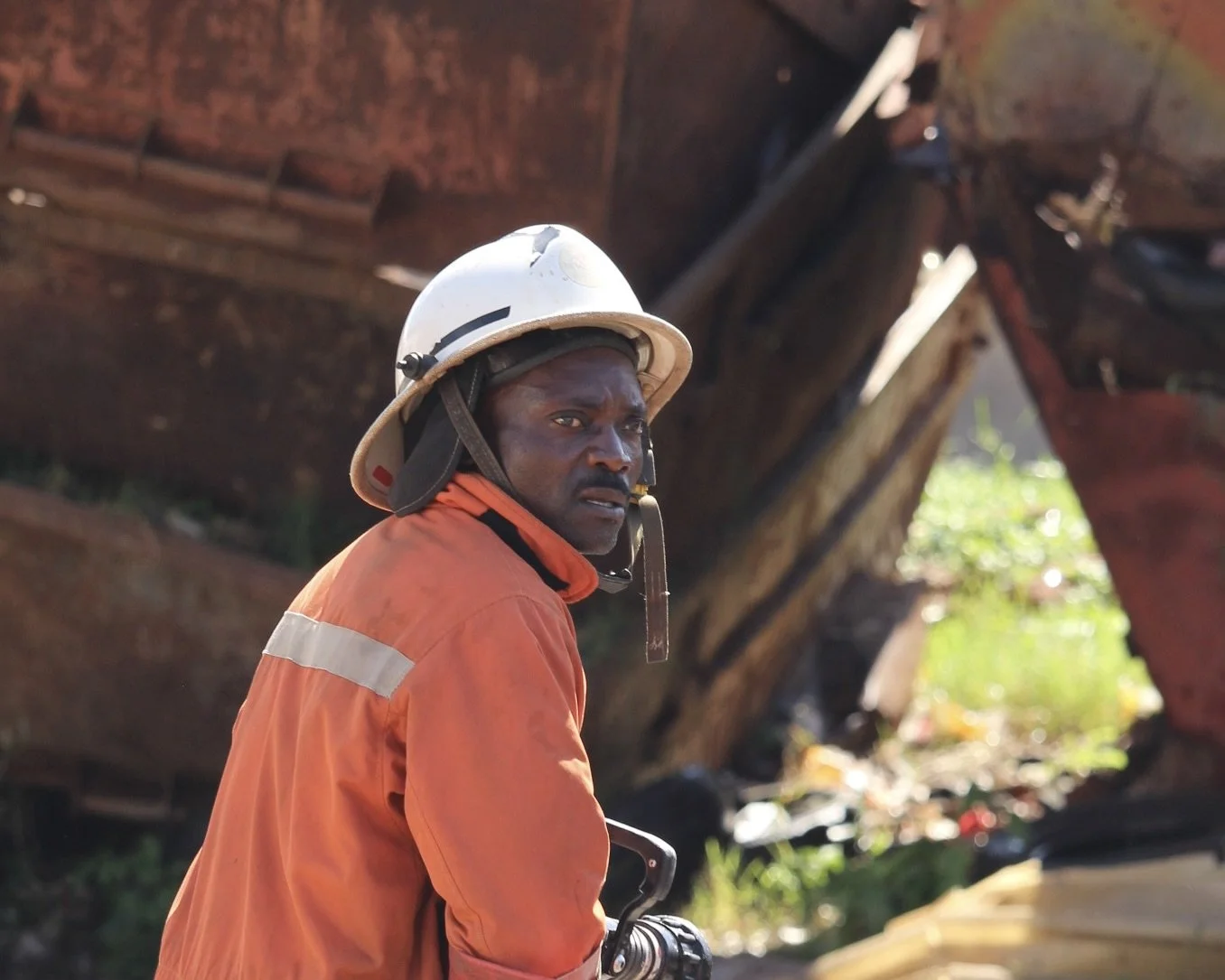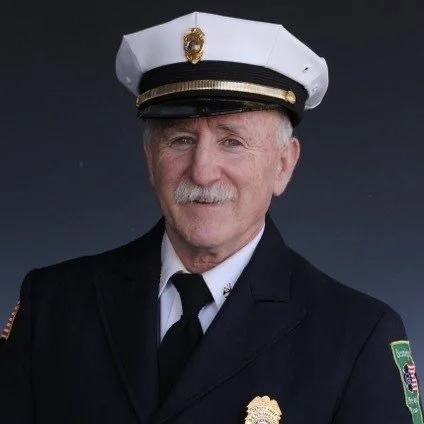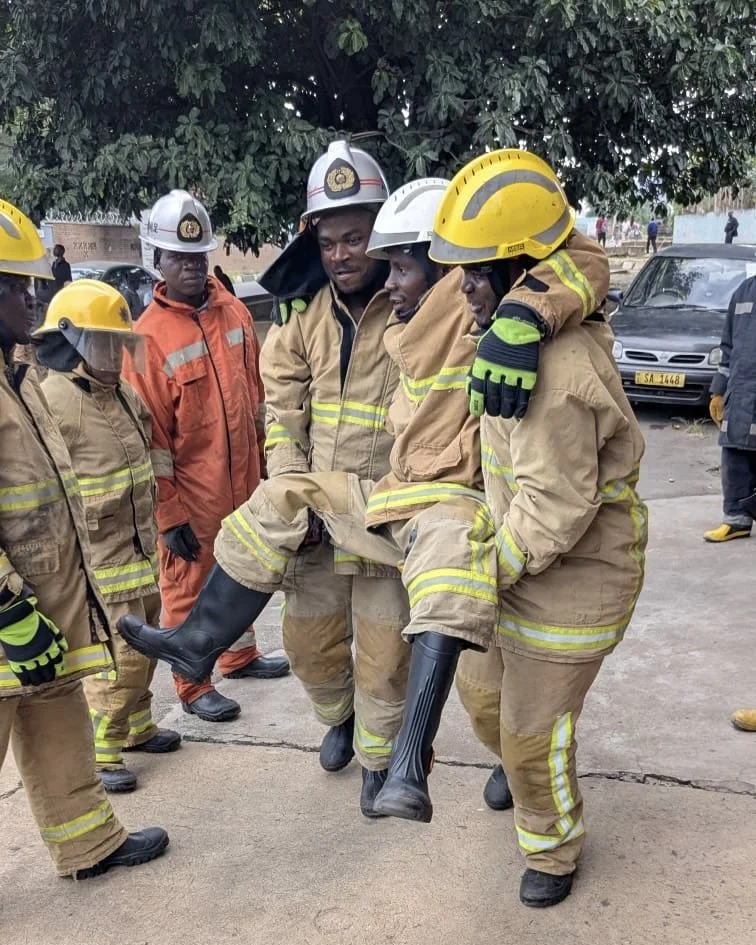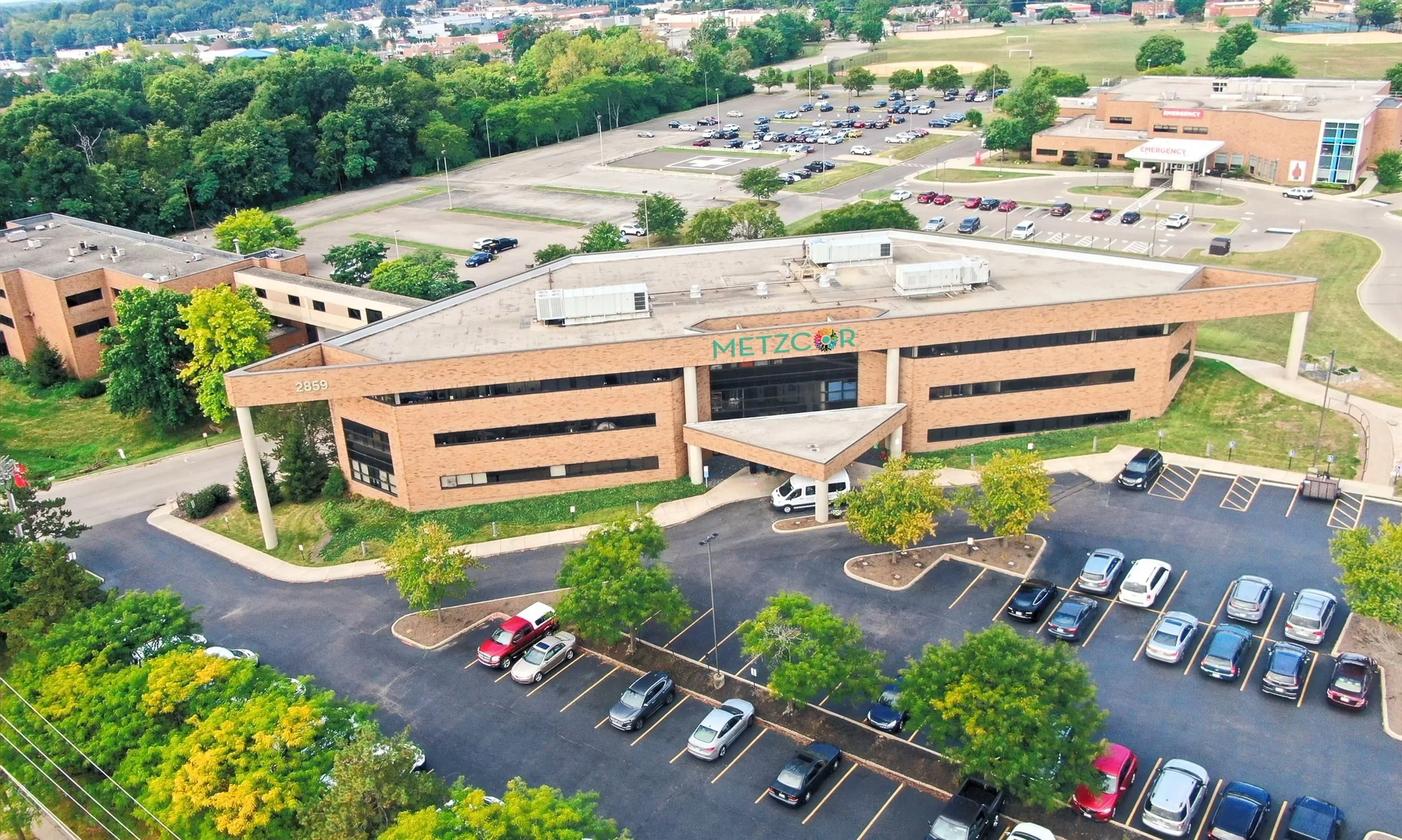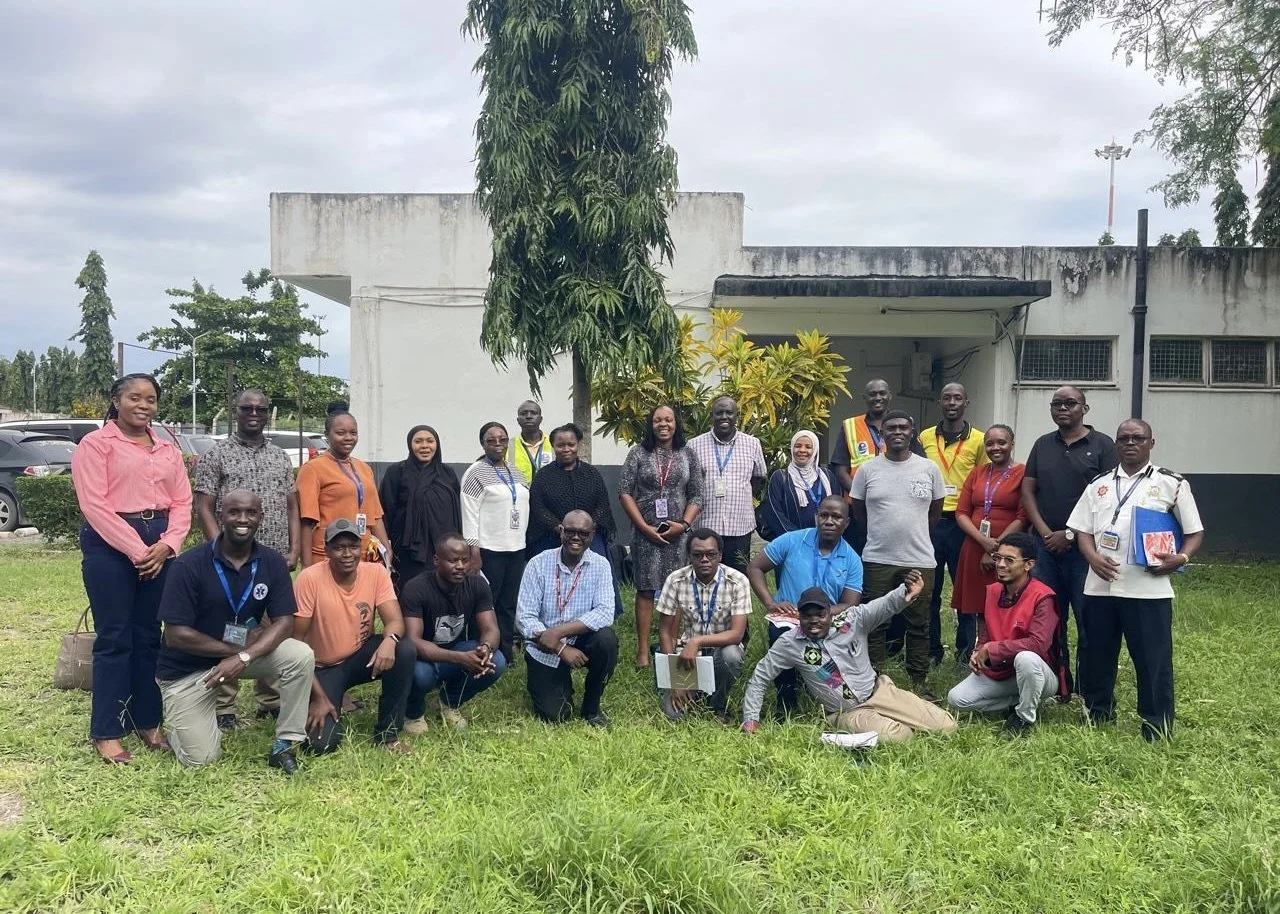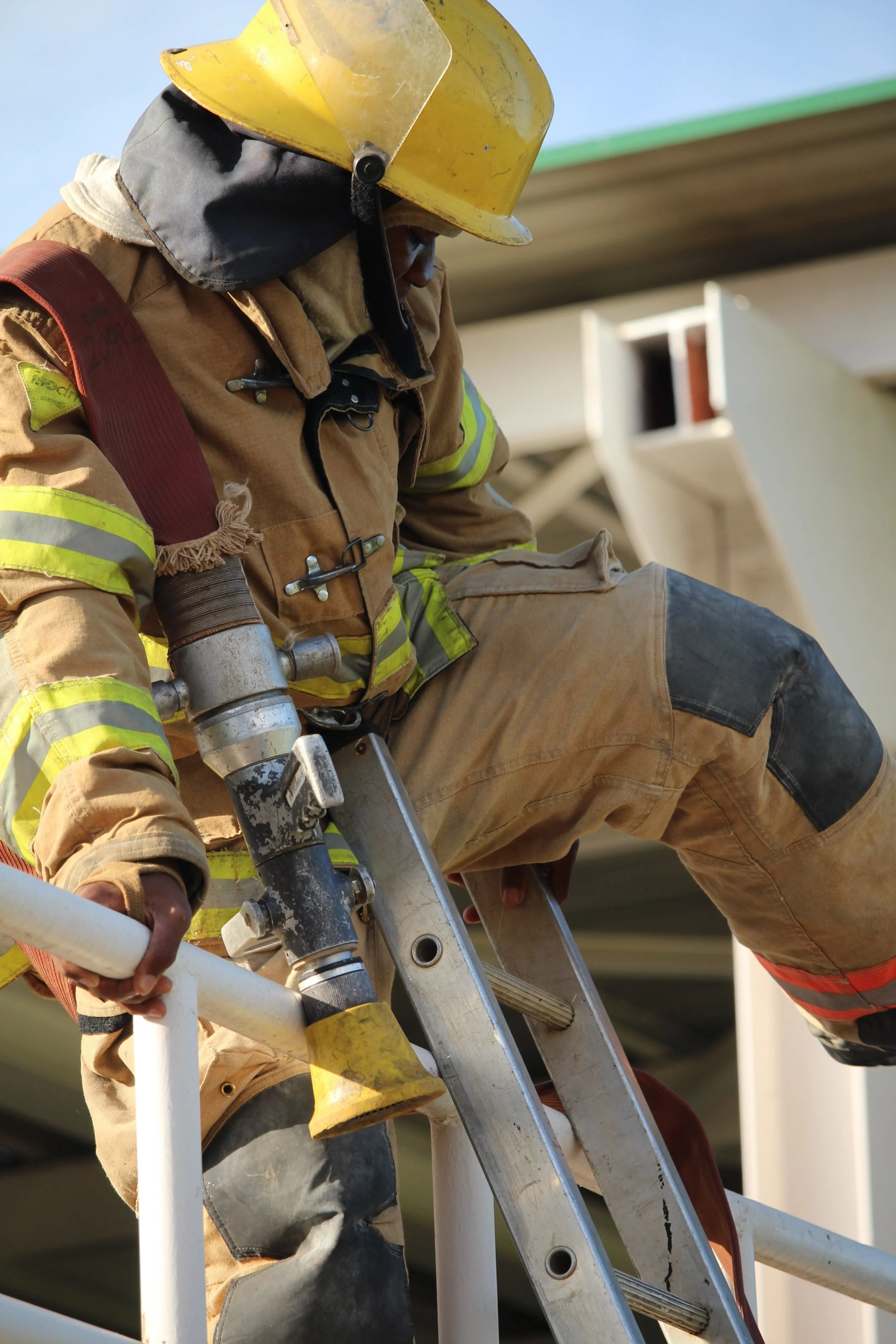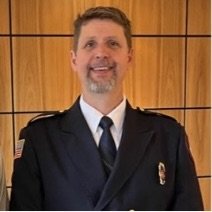Since 2023, the West Pokot County Fire and Rescue Department (Kenya) has implemented a sustained community fire prevention training and advocacy program aimed at improving public safety and reducing fire-related incidents. This initiative has been led by Mr. Josphat Cheptot, Chief Fire Officer, and Mr. Cyrus Kalemungorok, Assistant Chief Fire Officer, supported by a committed team of county firefighters.
Cyrus Kalemungorok writes more about his experience and the successes of the West Pocket County Fire and Rescue Department.
Burn Care Resources
Resources from Kristina Stiles
Saving Lives is Not Enough Report - A casualty-centred proposal identifying how Fire and Rescue Services can improve pre-hospital care and quality of life outcomes for burn survivors.
The Family Oops and Burns First Aid Book - A children's book created to support children and their families learning about burns prevention and first aid principles together. The book describes an accident prone family who are not burns aware, who have to go to school to learn about burn safety and first aid within the home. This book is a recommended reading for all nursery school teachers.
20 Minutes of Cool Running Water - Information on how and why to treat burns with cool running water for 20 minutes.
Burn Scar - Burn scars often form when deep skin layers are damaged and healing takes over three weeks. Discover why scarring is common, what treatments can reduce it, and why complete removal isn't possible.
Recognizing the Award Winners at the 2025 EMS and Fire Symposium, Mombassa, Kenya
Gas Cylinder Care
Gas cylinder care is a vital topic in communities that rely on these devices for cooking or other purposes. AFM’s staff team in Kenya, including Fire Safety Officer José Ngunjiri and Fire Safety Advocate Errol Sianga, regularly perform gas cylinder safety lessons in local communities. Now, you can access an official, professional recording of this training on our YouTube page! Whether you are a community member that relies on gas cylinders or you are a fire prevention instructor looking to further your understanding on the topic, please access the video below and watch the full lesson to help prevent deadly fires or explosions from gas cylinders.
Gas Cylinder Care Tips
Before using a gas cylinder, there are two steps you should always keep in mind:
Check the quality of your regulator. It needs to as clean as possible.
Take time connecting the regulator. Check to see if it is leaking or if there is any visible damage.
If a gas cylinder catches fire and starts to get out of control, remember to never throw your gas cylinder under any circumstances. If there is a fire that is starting to get out of control, take a solid, empty bucket and place it on top of the cylinder to create a vacuum, cutting off the air to the fire. Count slowly to five, then carefully remove the bucket away from you and turn off the cylinder. You can also drape a wet blanket and wrap the fire and cylinder completely. Again, count to five, then open it away from you and turn off the cylinder.
Kindly share this post and the video training with your communities to spread awareness on gas cylinder care.
Highlighting the 2025 Kenya EMS & Fire Symposium and Competition
The Impact of Leadership Training on County Fire and EMS Services
“The 2025 Fire and EMS Symposium at Bandari Academy in Mombasa provided an excellent platform for counties across Kenya to strengthen their emergency response capacity. As an instructor in the leadership class, I witnessed the dedication of Kenya’s firefighters and paramedics first-hand and saw the critical need for strong, ethical, and modern leadership within the sector.”
Suleiman Adan Issack, Chief Fire Officer of Mandera County, writes about his experience at the 2025 Kenya Symposium
AFM Receives Grant from Motorola Solutions Foundation
Fire Scene
The topic Fire Scene carries many connotations or sub-topics. Today’s supporting sub-topics are communication, coordination and control. When utilized consistently, the outcome is most often effective fire scene command. The commander must master and rely on these three skills to support fire and rescue operation efforts whether at single-family dwelling fires or large, commercial incidents.
Africa Fire Mission Receives Grant from Hamilton County ReSource
Africa Fire Mission is excited to announce we have received the Waste Reduction Innovation Grant from Hamilton County ReSource! This grant will provide financial support for our operations assisting AFM’s efforts in reducing firefighter PPE and supply waste, as well as using gently used firefighter PPE to support firefighters in Africa.
Firefighter Wellness
by Michael Anderson
Firefighter Wellness can be thought of as the firefighter encompassing their state of health including physical, mental, emotional and spiritual fitness. Firefighters should strive to improve their wellness and work to take steps in each of these areas to improve their lives and serve a very long career.
Fire service organizations have long been investing in the development of resources for fitness and items such as medical screenings. In recent years, more resources have been dedicated to behavioral health to highlight the needs of firefighters to address their mental and emotional fitness. This article will discuss a few of these topics and provide some small steps for individuals to work on their wellness.
Physical fitness:
Firefighting activities require a level of functional performance during response activities. Maintaining a level of fitness is necessary for firefighters and other emergency responders. The physical demands of firefighting along with the working environments require that members develop muscular strength and endurance. This functional fitness should include movements and activities that mimic situations that the firefighter will encounter in their duties.
Stretches, running, and other exercises are very important to a regular and beneficial fitness routine.
Maintaining a level of fitness through cardiovascular and strength training exercises has many benefits. Fitness activities will help firefighters develop muscular strength and endurance, allowing effective use of their equipment and more efficiency on incidents. Fitness helps with fatigue and recovery from strenuous work. The improved range of motion, strength, balance, and coordination also helps prevent injuries of firefighters. Additionally, fitness improves cardiovascular and respiratory system performance. Improvements in these areas both improve performance and overall health.
Medical Evaluations:
Routine medical evaluations are another component of firefighter wellness. Cardiovascular disease and occupational cancers continue to be leading causes of firefighter deaths in the United States. Several medical risk factors have been linked to line of duty death and injuries. The recently revised NFPA 1580 standards provide guidance on the areas to be evaluated during your medical exam.
The benefits of routine medical evaluations can be summed up in one word: detection. Early detection of medical conditions such as high blood pressure, high cholesterol, obesity, diabetes, and others will allow for treatment that can positively impact the risks of firefighters suffering a medical related emergency. Firefighters should take action when faced with increased risk factors from these medical conditions. Treatment for these conditions can reduce the impacts on a firefighter health event.
The increased risk of firefighters to cancer has been identified, recognized, and promoted throughout the fire service. Research has been able to link these increases risks to the exposures that firefighters face during their duties. Cancer screenings are encouraged to be included in your medical evaluation. Early detection and treatment have been shown to improve survival while allowing for reduced costs and less invasive procedures.
Behavioral Health:
The impact of the emotional stress that firefighters face is nothing new to those who serve. Many of us have seen our fellow firefighters experience emotional trauma with various impacts to their lives and careers. Suicides amongst first responders have been increasing at an alarming rate now that reporting mechanisms are in place. Research continues to show that ourselves and our colleagues are plagued by post-traumatic stress and the effects of self-coping activities that many choose to use to deal with these stresses.
A critical step in improving behavioral health is the understanding at the individual level and the organizational level that stress reactions to our job duties are normal. Developing a positive culture around the job stress and supporting members that need assistance can help ensure that mental and emotional fitness can be improved. As an organization, developing programs that look to support firefighters who are suffering from stress can be beneficial on the mental well-being of employees. Programs should look to ensure that members have access to specialized services that understand PTSD, firefighter stressors, alcohol and substance treatment, along with the ability to assist members with other areas of their lives that can impact their mental wellness.
Simple steps towards general wellness:
Maintain levels of functional fitness. Stay active, move often, and work to improve strength and endurance. Push yourself a few days a week and get your heart rate up towards your max heart rate.
Find fun activities with your exercise routine. Adding enjoyable activities to your routine will help you stay motivated in your fitness journey and will help your emotional fitness along the way.
Get an annual medical evaluation. Find a doctor or make an appointment with your physician. Tell them about the dangers firefighter face and ask them to include cancer screenings on a regular basis.
If your examination finds something, take action! Early detection leads to early intervention and vastly improves your ability to reduce your risks of injury or death.
Work hard to sleep well. Evaluate your sleep and find ways to sleep and rest better. Improved sleep can reduce stress and reduce risks.
Understand your stress and attack your stressors. Evaluate the stressors in your life and find ways to reduce how much they impact you. Managing your stress will make you a happier and healthier firefighter.
Find resources for your personal medical and mental health. Resources are available to help you overcome almost anything. Find some and use them when needed.
Physical wellness is key to improving your general wellness!
Taking small and simple steps can have big impacts on your personal and professional life. Begin the journey now and start becoming the best version of you.
Michael Anderson started in the fire service in 1998 as a volunteer in his rural hometown. He has served at Pflugerville Fire Dept. since 2000, currently holding the rank of Deputy Assistant Chief in Administration. With a passion for firefighter health and safety, Michael spent 14 years involved with the NFFF Everyone Goes Home Advocate Program. He has worked with firefighters and organizations across the United States working to improve the health and safety of firefighters. Chief Anderson also serves as an At-Large Director for the IAFC Safety, Health, and Survival Section.
Chief Anderson completed his undergraduate studies in Applied Arts and Sciences from Texas A&M University-Commerce and earned a master’s degree in Public Affairs from the University of Texas- Rio Grande Valley. Michael holds Fire Officer IV, Instructor III, Incident Safety Officer and Health & Safety Officer Certifications. In 2019, he Graduated the NFA Managing Officer program and achieved designation as a Chief Fire Officer from the CPSE Commission for Professional Credentialing in 2023.
Situational Awareness
As firefighters, we face numerous visible and hidden threats both on our way to the fireground and after we arrive. It is important for us to develop our situational awareness skills to help us identify the hazards and minimize risks to ourselves and the public. Furthermore, maintaining situational awareness enhances decision-making under pressure and fosters more effective responses in various situations, such as fighting a fire, rescuing a victim, or driving to a fire scene.
The OODA Loop
The OODA Loop, created by Air Force fighter pilot and military strategist John Boyd, is an excellent decision-making framework that consists of four steps: Observe, Orient, Decide, and Act.
- Observe: This step focuses on what is commonly called situational awareness. It involves making and recording observations.
- Orient: Observations are placed in context to understand the overall situation.
- Decide: Take the results of the orientation and observation steps and formulate the optimal course of action.
- Act: Execute on your decision without delay
The OODA loop helps us remain calm and relaxed during stressful situations, reducing tension and stress and improving everyone's ability to perform their tasks. It is also very helpful for preventing tunnel vision, one of the most dangerous pitfalls on the foreground. Tunnel vision occurs when stress and nerves narrow our focus, causing us to concentrate only on what is immediately in front of us. This lack of peripheral awareness can be deadly.
It is important to develop the habit of instinctively using the OODA loop. Practice it around the firehouse and even at minor calls. As you develop your observation skills, learn to use more than your sight. Paying attention to sounds and smells can teach us crucial fire information.
A firefighter checks his surroundings while training with a firehose.
Communication
Another important situational tool is communication. It is critical that we maintain constant communication with our team on the fireground. We need to inform our commanders and officers of our planned actions. For instance, if a window needs to be broken for ventilation, we must communicate this so that team members below can be aware of any falling glass.
Situational awareness is critical for first responders. We often must make quick decisions in high-pressure, high-stakes environments. By enhancing our situational awareness, we can make more informed decisions that help us stay alert and safe on the fireground.
Howard A. Cohen was a volunteer firefighter for 20 years. He began his firefighting career as a chaplain and retired as the deputy chief. He is currently AFM’s online program content director. He frequently presents for the Wednesday Webinars and contributes to the AFM blog.
An Introduction to the Principles of Emergency First Aid for Firefighters
by Howard Cohen
Not all firefighters are emergency medical technicians or paramedics, but we often serve as the first responders at scenes requiring life-saving first aid. Therefore, it is vital for all firefighters to possess at least a basic understanding of first aid. This short article aims to outline foundational principles for addressing trauma in situations where immediate life-saving medical assistance is needed. This article should not be seen as comprehensive first aid training. Nevertheless, with the basic and limited information provided here, and without any formal training, you may still have the opportunity to save someone’s life.
Scene Survey: The First Task
Size up: Regardless of your level of technical first aid training or medical knowledge, your first task when responding to an incident involving injuries is to gather as much information as possible about the situation. This is achieved through a thorough size up. It is crucial to assess the risks and dangers before rushing in to provide aid. Ask yourself, “What is trying to kill or harm me?” Is it traffic, wildlife, fire, an unstable building, falling objects, or floodwaters? You do not want to become another casualty or cause further harm to the patient.
Number of patients: Once you’ve ensured the scene is safe and stable, it’s time to determine how many individuals are involved in the incident. It’s easy to focus on patients who are crying out in pain and overlook those who are unconscious or not visible. Additionally, it can be tempting to rush to assist a person whose injuries seem more life-threatening than they actually are, such as someone bleeding from a superficial head injury, while another individual nearby has stopped breathing.
Primary Survey: The Second Task
The primary survey is an assessment of the three essential life-supporting functions: the respiratory, circulatory, and nervous systems, often called the ABCDs. Any problems related to these systems present an immediate risk to the patient's life and must be addressed without delay.
ABCDs: Once the size-up is completed, the scene is safe (or as safe as you can make it), and you have a sense of the number of patients needing aid, initiate a primary survey of the patients by checking the status of the three conditions that represent an immediate threat to life.
Airway: Check to make sure that the mouth and airway are cleared and that air is actually going in and out.
Blood is circulating: Ensure that blood is not spilling out and that it is actively circulating.
Disabled: Check whether the spine is stable and the central nervous system is functioning normally. Due to the limited scope of this article, I will not discuss further injuries related to the head, neck, or spine.
Active Bleeding Control Instructor checks the pulse and applies bandages to a patient.
Basic Life Support (BLS)
Basic life support (BLS) is the immediate treatment of one of the three life-threatening emergencies found during your primary survey. Its purpose is to provide temporary support to keep the patient alive while a secondary survey is conducted and/or until advanced treatment is available.
The simplest way to begin a primary survey is to ask the patient, “How are you?” If he answers, you know that his airway is not obstructed (A), his heart is beating (B & C), and his brain is functioning (D). If the patient does not respond or responds in an unusual way, you will need to look more closely.
Airway:
Airway problems result from an obstruction to the pharynx or larynx, which can be complete or partial. A complete obstruction is rapidly fatal, but it can be effectively and dramatically treated by clearing the airway. There are various ways an airway can become obstructed, such as vomit, a foreign object, swelling caused by trauma, an irritant, or an allergic reaction. It is imperative that you clear the airway, but you must do so without causing any additional harm to the patient.
Breathing:
A person can have an open airway yet still experience difficulty breathing. This may result from an injury to the brain, spinal cord, or diaphragm. The method for assisting a patient with breathing when more advanced medical care is unavailable is known as positive pressure ventilation or artificial respiration (mouth-to-mouth). The inflation rate should be around 12 breaths per minute or one every 5 seconds, with each breath lasting about 1 to 1.5 seconds. Rapid breaths can push air into the stomach, potentially leading to vomiting.
Bleeding & Circulation:
Uninterrupted blood circulation is essential for survival. There are two primary types of disruptions to blood circulation that a first responder can address: cardiac arrest and bleeding. Cardiac arrest occurs when the heart stops beating. During your primary survey, if you discover that the patient has no pulse, it indicates that her heart has stopped beating, and she is in cardiac arrest. It's important to note that in adverse situations, or if the patient is in shock, finding a pulse can be challenging. The carotid pulse is the strongest and easiest to access; it is located on either side of the larynx in the neck. If there is no carotid pulse, the heart is not beating. CPR (cardiopulmonary resuscitation) is the only treatment for cardiac arrest. Even with hands-on training, it has limited potential to restore and sustain life.
The second type of disruption to circulation results from significant blood loss. Controlling blood loss is essential as part of BLS. Bleeding can be internal, which is often difficult to identify and stop, or external, though it may not always be obvious. Addressing internal bleeding goes beyond the scope of this article and the capabilities of most first responders in the field. External bleeding is managed by applying direct pressure to the bleeding site with your hand, ideally using a cloth or bandage. This application is not intended to absorb the blood; instead, it provides uniform pressure across the wound. Prepare to maintain direct pressure for ten minutes or more. If the bleeding does not stop, remove the bandage to locate the source of the blood and then reposition your hand.
There is no easy rule for determining when bleeding is severe. A rule of thumb is that if it looks like a lot of blood, it probably is. However, severe bleeding can be missed if the patient is wearing a lot of clothing or the blood is absorbed into the ground around the patient.
Conclusion:
Firefighters practice safely transporting an injured person.
When developing first aid skills, like all skills a firefighter must master, training and practice are essential. Additionally, reading about the principles and theories that support these skills is important. However, there is no substitute for training and practice.
For more information, visit the following references:
Africa Fire Mission Active Bleeding Control Resources
The Outward Bound Wilderness First-Aid Handbook; Jeff Isaac & Peter Goth.
The Field Guide of Wilderness & Rescue Medicine; Jim Morrissey & David Johnson.
Opening an Unconscious Patient’s Airway with a Manual Manipulation
Howard A. Cohen was a volunteer firefighter for 20 years. He began his firefighting career as a chaplain and retired as the deputy chief. He is currently AFM’s online program content director. He frequently presents for the Weekly Virtual Firefighter Trainings and contributes to the AFM blog.
2025 Chama Award Recipients: Mission Partner
2025 Chama Award Recipients: Volunteer and Instructor of the Year
Fireground Tactics
by F. R. Montes de Oca
Initial arrival at a fire often poses several simultaneous challenges for the officer to address rapidly. Utilizing the Rule of 3 can help the incident commander to develop a tactical posture. They are:
1. What do I have?
2. Where is it going?
3. What do I need?
The first question (What do I have?) addresses:
The terrain of an incident location or layout of a building can impact the tactics you should use.
What is the building used for? Living? Storage? Manufacturing?
Is it a single or multiple-family dwelling?
Are there victims? If so, how many? Are they exiting on their own?
What is the square footage and how many stories?
Are additional occupants still in the structure who need help to exit?
Similar questions can be asked for a vehicle fire: size (single, multi-vehicle or public transit vehicle. Victims out or entrapped?
The second question (Where is it going?) forces you to think about the possibility of spread:
Do I have exposures? Is high heat or high winds affecting fire spread?
Can I ignore the exposures and focus on the primary body of fire?
Will I need additional resources for fire progression AND exposures?
Must I focus all resources to rescue occupants?
Focusing on egress pathways for building occupants is imperative. Often-times with limited resources tactics must be focused solely on rescuing or assisting occupants exit the structure.
The third question (What do I need?) is based on what is discovered or decided upon by answering the first two questions. What resources needed implies deciding whether hoselines are applied directly initially or are supply lines needed – or must victim rescue be my first tactic?
The situation is often complicated by the fire rapidly spreading due to high winds or multiple victims needing rescue. When this occurs, tactics will change quickly from suppression to rescue.
While the tactics may address the initial and additional challenges, it is important to remain cognizant of additional aspects to ensure an effective fireground operation:
Communications, which is the critical conduit of incident management. All on-scene and responding members must be apprised of the current situation and have a clear understanding of their assignments.
Rehabbing responders operating on scene is one of the most important actions the Incident Commander can ensure occurs. Ensuring that members take a short break every 15 minutes or so will allow crew viability and increased scene effectiveness.
Incident Safety should be the overarching effort all scene commanders should undertake. Whether on scene at a structure fire, complex vehicular accident or hazardous materials incidents maintaining the safety and well-being of responders is imperative.
If formally assigned Safety Officers are not part of the department, it is advisable to appoint someone on scene whose only function is observing operations to ensure the safety and welfare of all firefighters. Whenever possible, the individual assigned the task should possess a mix of experience and formalized safety training.
At your next emergency incident pose the three questions to assist you in developing effective tactical decisions.
In closing, Incident command truisms that help officers maintain a sharper eye on effective tactical decision-making:
When a tactic is not working, change the tactic.
No matter how good your plan is, have a backup plan.
Frank Montes de Oca served as a firefighter/paramedic for over 38 years attaining positions as Chief of EMS, Training Bureau Commander, and Chief of Department. He remains engaged in managing and developing firefighter safety programs and mentoring leaders.
Successes and Updates on AFM's Active Bleeding Control Program
Africa Fire Mission (AFM), in collaboration with its international research and implementation partners, received support from the Laerdal Foundation to launch Active Bleeding Control (ABC): A Pilot Life-Saving First Aid Program in Sub-Saharan Africa. The project aims to reduce death and disability from life-threatening bleeding in Sub-Saharan Africa through contextualized training for first responders and community members. This includes a focus on reducing deaths from life-threatening bleeding in high-risk road traffic accident corridors in Nairobi. This was the first year of a three-year grant and we were able to make significant progress with implementing a contextualized program for Sub-Saharan Africa.
Volunteers participating in ABC training.
Our goal for the training of trainers was to create a replication model for training. Since the end of March 2025, volunteer instructors have trained more than 790 individuals. The training has already been conducted across two countries (Kenya and Malawi) and eight cities/ counties (Figure 3). This training equips community members with critical skills to stop lifethreatening bleeding. Participants in the Active Bleeding Control trainings come from diverse backgrounds, including transit workers, workers in the hospitality industry, students, community health promoters, public health officers, teachers, church groups, museum staff, firefighters and EMTs. Interest in the program is growing, and replication of the training is gaining momentum as our instructors actively engage with their communities. We are now over halfway to our goal of training more than 1,000 individuals in life-saving active bleeding control techniques and are actively developing strategies to expand training access for transportation personnel.
These successes highlight the need for this program and the success of our replication modelfor training. Contextualizing the Active Bleeding Control (ABC) curriculum for the Sub-Saharan African context has proven essential to the program’s acceptance and effectiveness. Our focus groups highlighted that cultural norms in many communities discourage bystander involvement in emergencies, often due to fear of legal consequences, misunderstandings about disease transmission, or social taboos around touching blood or injured persons. In some cases, people are explicitly advised not to help, out of concern for personal liability orsuperstition. Additionally, limited awareness about basic first aid practices andmisconceptions about bleeding injuries can lead to harmful delays in care. By adapting training materials to reflect local language, beliefs, and lived experiences—and by incorporating trusted community voices—we are addressing these barriers and fostering anew culture of empowered, informed responders within the community.
Empowering trainers to volunteer their time to impact their communities has also proven tobe a successful model fostering increased buy-in as well as long-term commitment for sustainability and growth of the training program.
Interested in learning more? Read our full report below:
Africa Fire Mission Partners with Universities for LDE Global Grant Project
Africa Fire Mission is excited to announce our partnership with the Delft University of Technology, International Institute of Social Studies of Erasmus University, Leiden University, and GRO6 Fire Network on a global research project, titled Co-creating Fire Safety Innovations for Domestic Fires with Grassroots Organizations in Informal Settlements in Kenya.
PFAS and Firefighters in Africa
by Mike Kull
Recently there has been discussion throughout the Fire Service about the presence of and exposure to PFAS for firefighters. PFAS (per- and poly-fluoroalkyl substances) are a man-made class of thousands of “forever chemicals” that do not break down in the environment, are highly mobile, and can accumulate in the body and cause disease.
Firefighters are exposed to these chemicals several ways:
Smoke and Soot from Fires
AFFF (Aqueous Film Forming Foam) Firefighting Foam
Dust, Dirt and Debris around the Fire Station
Firefighter Turnout Gear (PPE or Personal Protective Equipment)
There are many ways to try to reduce exposure to these hazardous chemicals. Firefighters should always wear a complete PPE ensemble (Tunic, trousers, boots, gloves, hood, helmet and BA) when exposed to smoke from fires containing any man-made products. This PPE should be properly cleaned after each exposure to smoke and soot. Care should be taken when removing this contaminated gear and firefighters should thoroughly clean and shower themselves after each incident involving smoke and soot. Fire Brigades should evaluate the type and use of AFFF foam. AFFF should not be used for training, exposure should be limited, and everything exposed should be flushed with clean water. Care should be taken while cleaning the Fire Station and equipment to limit exposure to dust and soot from fires.
These are all practices that have been implemented throughout the world to limit exposure to harmful chemicals. Another exposure comes from PPE itself. Research has shown that most firefighter PPE is treated with some of these “forever chemicals.” The equipment is treated with these chemicals to meet standards and requirements for the performance and manufacture of firefighting PPE. These chemicals may be used to increase resistance to flames and provide waterproofing in the equipment. Firefighters can be exposed to these chemicals through absorption through the skin.
The exposure to these chemicals from firefighting PPE poses a special problem for many firefighters in Africa. In other parts of the world, Fire Brigades are changing policies and procedures and procuring alternate equipment to reduce this exposure. The equipment containing these chemicals is only being used for incidents involving fire. For many African firefighters, turnout gear is worn all the time. Many firefighters do not have uniforms, and the turnout gear is worn as if it were a uniform. Many firefighters don’t have access to alternate forms of PPE that do not contain these chemicals so wearing a different type of PPE is not an option.
Summary:
Firefighters need to be aware of the hazard of being exposed to PFAS.
Firefighters need to take steps to limit their exposure to these chemicals.
Firefighters need to find a balance between reducing exposure to hazards and appropriately serving their communities.
Firefighters should explore other options for identifying themselves with uniforms instead of PPE.
Firefighters should only wear turnout gear to achieve a specific purpose such as training, responding to emergencies and increasing community sensitization.
After wearing turnout gear, firefighters should maintain the highest levels of personal cleanliness and hygiene.
For more information, visit the following pages:
Mike began serving as a volunteer with AFM in 2021. After his first trip to Kenya, he committed himself to serving the firefighters in Africa and has been volunteering with AFM ever since, and now works as Programs Director. Mike has worked in all aspects of Public Safety since 1998. He served 17 years as Fire Chief in Valley Township, Pennsylvania and also as a Forest Fire Warden for the Commonwealth of Pennsylvania. He has a background in law enforcement, EMS and the fire service, as well as politics, having served as a local elected official. Mike has a BS in Administration of Justice from the Pennsylvania State University, where he met his wife Jody. They reside in Bellefonte, Pennsylvania with their son Gunther.
Safety Versus Security: Can We Have Both?
by Jerry Bennett
During our fire training and prevention trips, one cannot help but notice the heavy security gates and bars protecting homes and businesses across Africa. Physical security is a necessary part of life regardless of where you live and work. Most of the world has cities and neighborhoods with heavy security measures such as padlocks, deadbolts, and security bars on windows and doors to prevent theft and vandalism, for good reason. Thieves will break in and steal or cause harm. At the same time, as homeowners and firefighters, we know that locks and bars designed to protect us from wrongdoers on the outside may also prevent us from fleeing danger inside our homes, especially fire and smoke. So, we must consider both risks: keeping bad people out whilst being able to escape quickly during a fire or other emergency.
The last fatal fire I responded to before retiring was a twelve-year-old boy. While he was sleeping, a blanket came in contact with a space heater and started a fire in his home. His parents had left for work and locked the children inside using a double-cylinder deadbolt (which requires a key to enter or exit). Unable to escape without the key, the boy hid in a closet and died of smoke inhalation. While double-cylinder deadbolts are less common in American homes, most homes and dormitories I have visited in Africa require a key to exit from the inside when the door is locked, usually unlocking a padlock.
Firefighters train fighting fires with a large wall as an obstacle.
So what can be done? As household leaders, consider your escape plan for your own home. If all windows and doors have security bars, could a modification be made to allow the bars to swing out after unlocking a mechanism with a key? This could be especially important in a two-story home where everyone sleeps upstairs and a fire starts in the kitchen below, preventing exit through normal means. If your home has one or more gates locked with a key, who has access to the keys, and where are they kept? Each family must make these decisions intentionally considering the possibility of fire even when parents are away from home. Consider these issues for other homes and businesses when conducting safety evaluations. Raising these concerns with home and business owners may cause them to devise creative solutions to balance security and safety.
Jerry Bennett is a retired District Fire Chief from Illinois. He joined the AFM team in 2021 and has participated in several Mission Trips. Today, he is a member of our Board of Directors and assists AFM in planning and training.
Serving the Community in Mzuzu, Malawi - Stories from Malawi, 2025
In 2025, a team of firefighters from the US and Kenya traveled to Malawi for firefighter instruction and fire safety training. During this trip, three AFM team members had the unique opportunity to present fire evacuation trainings to a group of deaf and blind students in Mzuzu, Malawi. This school has not participated in any modern fire evacuation trainings or drills until this year when the AFM team visited. These drills sparked curiosity and excitement about fire safety in the students and their teachers which quickly spread to the wider community.

